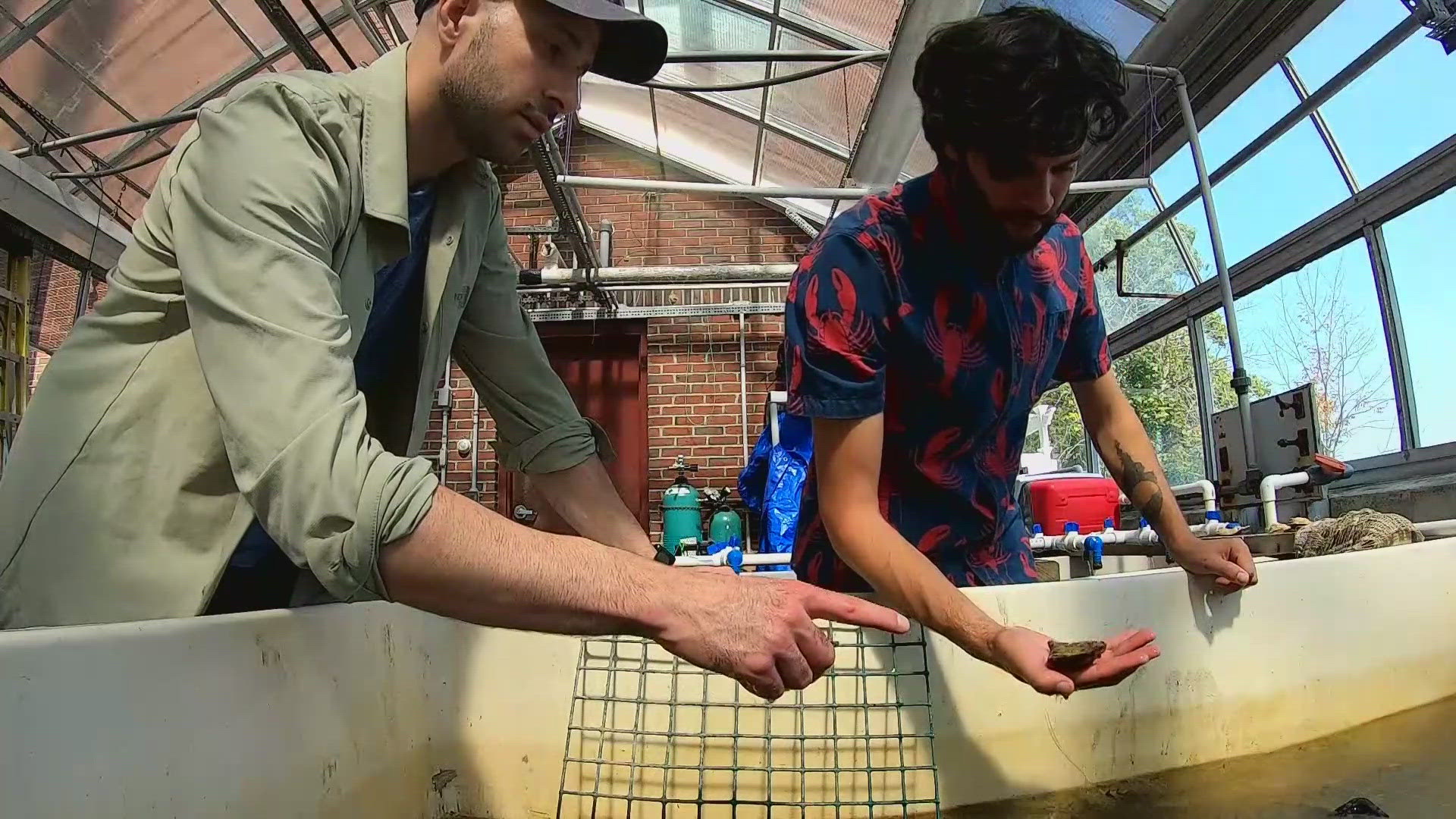DURHAM, N.H. — Climate change might doom a species of shellfish popular with seafood lovers.
Researchers at the University of New Hampshire have discovered that extreme weather conditions, such as heat waves and cold snaps, can be deadly to oysters and other marine organisms.
That data could help harvesters along the Gulf of Maine develop strategies for ensuring their survival.
Inside these tanks, scientists from the University of New Hampshire expose oysters to varying degrees of stress. Attached to these heart monitors, data are collected as the shellfish are exposed to short, intense heat waves and milder temperatures. Researchers discovered that all can be equally deadly to marine organisms.
"Their heartbeat gets faster and faster, and at some point, it begins to slow down," Andre Villeneuve explained.
Villeneuve is a doctoral student in marine biology at the University of New Hampshire College of Life Sciences and Agriculture. He and Easton White, an assistant professor at UNH's College of Life Sciences and Agriculture, say extreme weather conditions can devastate shellfish, including oysters.
The species have made a significant comeback in the Great Bay, thanks to efforts to rebuild oyster reefs. The New Hampshire estuary takes in water from the Gulf of Maine mixed with fresh water from seven rivers. An individual oyster is capable of filtering fifty gallons of water per day.
"If they are stressed, unhealthy, or the population is declining, you are now losing all the filtering capacity within the bay," White said.
Scientists have also placed dozens of sensors that look like oysters in different bay areas.
Temperatures during tidal changes, including low tide, are tracked in real-time.
The data collected by UNH scientists can be used as a forecasting tool to inform oyster farmers to lessen the impact of rising temperatures.
"One of the things we can do is start selecting oyster strains from further south adapted to warmer conditions," Villeneuve said.
"Things are getting warmer here, and we see our oysters stressed. I think that should be a warning sign for folks in Maine and farther up the coast," White explained.
Harvesters can also consider relocating oyster beds to cool waters during peak heat events to ensure the species' survival.

